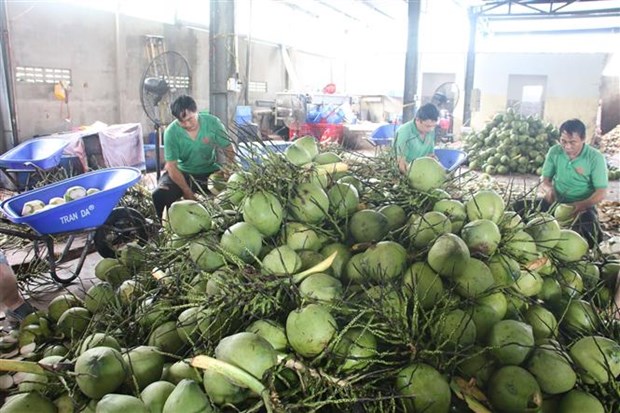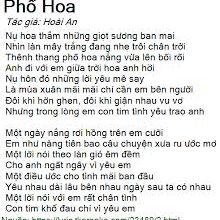Young coconut Vietnam export

Young coconut Vietnam export, often referred to as green coconuts, are the immature fruit of the coconut palm, scientifically known as Cocos nucifera. These coconuts are harvested before they reach maturity, typically between six to eight months of age. One of the distinct features of young coconuts is their smooth, green exterior, which is in stark contrast to the rough, brown husk of mature coconuts. The tender flesh inside is moist and gelatinous, while the water contained within, known for its refreshing properties, is sweet and hydrating.
Introduction to Young Coconuts
The nutritional benefits of young coconuts are considerable. They are low in calories and rich in electrolytes, making them a popular choice for hydration. Additionally, young coconuts contain vitamins such as C and B, minerals such as potassium and magnesium, and healthy fats. This nutritional profile not only aids in replenishing lost fluids but is also believed to support overall health, enhancing energy levels and aiding digestion.
In culinary applications, young coconuts are highly versatile. The water is often consumed as a refreshing beverage, acclaimed for its natural sweetness and cooling effect, particularly in tropical climates. The tender flesh, with its unique texture, is used in various dishes, ranging from desserts to salads and smoothies. Their light flavor complements many recipes, appealing not only to local palates but also attracting international culinary enthusiasts.
Young coconuts are increasingly gaining popularity in the global market, driven by the rise of health-conscious consumers seeking natural hydration options. Their unique characteristics and health benefits contribute significantly to their demand, making them a sought-after commodity in export markets. As the young coconut export industry in Vietnam continues to grow, leveraging these appealing attributes can be pivotal for thriving in both domestic and international arenas.
Vietnam’s Coconut Production Landscape
Vietnam plays a significant role in the global coconut production industry, notably as one of the top exporters of young coconuts. The country’s geographical diversity and favorable climatic conditions create an ideal environment for cultivating various coconut species. Major coconut-growing regions include the Mekong Delta, the southern coastal provinces, and parts of central Vietnam. These areas benefit from warm tropical temperatures, abundant rainfall, and rich alluvial soils, which facilitate healthy coconut growth and high yield outputs.
The Mekong Delta, in particular, is recognized as the heart of Vietnam’s coconut farming. With its extensive network of rivers and fertile land, this region produces a substantial portion of the nation’s coconuts. Provinces such as Ben Tre, Tra Vinh, and Dong Nai not only excel in volume but also in the quality of young coconuts, making them essential players in the export market. Statistically, Vietnam exports approximately 1.5 million tons of coconuts annually, outpacing many competitors in terms of volume and market demand.
The economic significance of coconut cultivation in Vietnam cannot be overstated. As a cash crop, coconuts offer farmers a viable source of income, contributing to their livelihoods and the local economy. Many families depend entirely on coconut farming, highlighting its role in poverty alleviation and rural development. Additionally, the coconut industry generates employment opportunities in processing and distribution, further enhancing its economic impact. With increasing global demand for young coconuts and coconut products, Vietnam’s coconut production landscape is poised for growth, ensuring its prominent position in the international market.
Export Trends and Statistics
The export of young coconuts from Vietnam has experienced significant growth over the past several years. According to data from the Ministry of Agriculture and Rural Development, the volume of exported young coconuts has increased steadily, with an average annual growth rate of approximately 15%. In 2022, Vietnam exported over 150 million young coconuts, marking a remarkable increase from the previous year. This trend has solidified Vietnam’s position as one of the leading exporters of young coconuts in the global market.
Key destinations for Vietnamese young coconuts include countries such as the United States, Canada, and various nations across Europe and Asia. The United States remains the largest market, accounting for nearly 40% of total exports. In recent years, there has been an increasing demand for healthy and natural food options, which has further propelled the export of young coconuts. Additionally, emerging markets in the Middle East and East Asia are also becoming significant consumers, contributing to the industry’s growth.
Seasonal factors play a crucial role in the supply and readiness for export of young coconuts. Vietnam’s tropical climate allows for year-round cultivation; however, peak harvest seasons typically occur between July and September. During these months, the availability of young coconuts increases, leading to a surge in export volumes. Conversely, the off-peak season may see a decline in supply, affecting the overall export capacity.
When comparing Vietnam’s young coconut exports to those of other countries, it is noteworthy that the Philippines and Thailand also have substantial markets. However, Vietnam’s strategic location and improved logistics have provided it with a competitive edge, enabling it to cater effectively to international demand. As the global market for young coconuts continues to expand, Vietnam’s export trends indicate a bright future for this sector, characterized by robust growth and increased international engagement.
Export Regulations and Standards
The young coconut export industry in Vietnam is subject to a comprehensive regulatory framework designed to ensure the quality and safety of its products in international markets. The regulations primarily focus on health and safety standards, packaging, labeling requirements, and obtaining the necessary certifications for global trade. Adherence to these standards not only guarantees the safety of the young coconuts but also enhances Vietnam’s reputation as a reliable exporter.
Health and safety regulations are crucial in the agricultural export sector. The Vietnamese government, in collaboration with international regulatory bodies, mandates that exported young coconuts undergo rigorous quality assessments to meet specific health guidelines. This includes tests for pesticide residues, microbial contaminants, and other harmful substances. Meeting these stringent health standards is essential for ensuring that the young coconuts are safe for consumption and align with the expectations of importing countries.
Packaging and labeling regulations play a vital role in the export process. Young coconuts must be packaged in a manner that preserves their freshness and integrity during transportation. Additionally, packaging must comply with international norms, which often require information on the origin, date of harvest, and storage instructions. Proper labeling not only aids in compliance with legal standards but also enhances consumer trust in the product.
Furthermore, acquiring certifications such as GlobalGAP or USDA Organic can significantly improve the prospects of young coconut exports. These certifications validate that the products adhere to high-quality agricultural practices. Compliance with these regulations and standards not only promotes quality assurance but also strengthens Vietnam’s standing in the competitive global coconut market, making it crucial for exporters to remain vigilant and informed about ongoing regulation developments.
Challenges Facing Exporters
The young coconut export industry in Vietnam is confronted with a myriad of challenges that significantly impact its growth potential and sustainability. One of the primary issues is logistics. Exporters often face difficulties in transportation and storage, particularly given the perishable nature of young coconuts. Delays in shipping can result in substantial losses, making it crucial for exporters to establish efficient supply chains. Reliable logistics partners and improved infrastructure are essential for addressing these logistical hurdles.
Another pressing challenge is the fluctuation of market prices. Young coconut exporters frequently encounter price volatility due to varying global demand, trade policies, and competition from other countries such as Thailand and the Philippines, which are also key players in the coconut export market. This inconsistency can hinder profits and planning for exporters, who must be agile and adaptable in their pricing strategies to remain competitive.
Moreover, climate change poses a significant threat to agriculture in Vietnam. Altered weather patterns and natural disasters can adversely affect coconut crop yields and quality. This necessitates a shift towards more resilient agricultural practices and the adoption of advanced farming techniques to combat these environmental impacts effectively.
The increasing competition from other exporting nations highlights the need for Vietnamese exporters to innovate and enhance their products. Emphasizing quality, sustainability, and unique selling propositions can help mitigate the pressure from competitors on the global stage. Furthermore, the investment in modern farming technologies and training for local farmers is pivotal in ensuring consistent quality and adherence to international standards.
Overall, while the challenges facing young coconut exporters in Vietnam are multifaceted, strategic solutions and adaptability can position them for future success in the global market.
Marketing Strategies for Young Coconuts
The young coconut export industry in Vietnam has experienced significant growth, driven by effective marketing strategies that resonate with international markets. One primary approach is the emphasis on branding, which involves creating a distinct identity that appeals to consumers’ preferences for health and wellness products. Brands that convey authenticity and sustainability often gain a competitive edge. Vietnam’s exporters are increasingly focusing on the organic and natural aspects of young coconuts, aligning their branding with the rising global trend towards health-conscious choices.
In addition to branding, packaging innovations play a crucial role in attracting international buyers. Exporters are investing in environmentally friendly packaging solutions that not only protect the product but also appeal to eco-conscious consumers. Attractive designs that incorporate vibrant colors and informative labels can enhance shelf presence, making young coconuts stand out in a crowded marketplace. Furthermore, innovative packaging that ensures convenience, such as easy-to-open shells, adds to the overall customer experience, contributing to brand loyalty.
Participation in international trade fairs is another strategy that has proven effective for young coconut exporters. These events provide a platform for exporters to showcase their products, connect with potential buyers, and gain insights into market trends. Networking with other stakeholders in the industry can lead to valuable partnerships and new distribution channels. Successful case studies from these trade fairs show how Vietnamese exporters have leveraged personalized interactions to create strong relationships with international clients.
Lastly, digital marketing tools are increasingly being utilized to enhance visibility and reach in the global market. Social media platforms, search engine optimization (SEO), and targeted online advertising campaigns are being employed to disseminate information about young coconuts to potential buyers around the world. Engaging content that highlights the versatility and benefits of young coconuts can attract a wider audience. By integrating these various marketing strategies, Vietnamese young coconut exporters are positioning themselves favorably in the competitive international landscape.
Sustainable Practices in Coconut Farming
In recent years, the young coconut export industry in Vietnam has increasingly embraced sustainable practices to enhance both environmental and economic sustainability. Organic farming techniques have become a cornerstone of this movement, allowing farmers to cultivate coconut trees without the use of synthetic pesticides or fertilizers. These methods not only preserve soil fertility but also promote the health of surrounding ecosystems. By implementing practices such as crop rotation and companion planting, coconut farmers are able to maintain soil health and bolster biodiversity.
Water conservation is another critical aspect of sustainable coconut farming. Vietnamese farmers are adopting rainwater harvesting systems and drip irrigation technologies to optimize water use. These methods reduce dependency on groundwater and help to mitigate the risks associated with water scarcity, which is becoming increasingly significant due to climate change. By managing water resources effectively, farmers can ensure that their coconut palms receive adequate moisture without adversely impacting local water supplies.
Biodiversity conservation is also integral to sustainable coconut farming in Vietnam. Farmers are encouraged to plant a variety of crops alongside coconut trees, which contributes to ecological balance and resilience against pest outbreaks. This biodiversity not only enriches the environment but also provides additional sources of income for the farmers, as they can diversify their product range, thereby reducing financial risks.
Community involvement plays a vital role in promoting sustainable practices within the coconut farming sector. Local cooperatives and organizations have been established to educate farmers on sustainable techniques and to share resources. By working together, communities can leverage collective knowledge and experiences, ensuring that sustainable practices are widely implemented and supported. The ongoing commitment to sustainability not only benefits the environment but can also lead to increased revenues through higher-quality export products and access to niche markets focused on sustainable goods.
Future Outlook for Vietnam’s Young Coconut Exports
The young coconut export industry in Vietnam is poised for significant growth, driven by emerging market trends and advancements in cultivation technologies. As health-conscious consumers increasingly seek natural products, the global demand for young coconuts continues to rise. This trend is particularly notable in regions such as North America and Europe, where young coconut water is gaining popularity for its natural electrolytes and hydrating properties. Consequently, Vietnam, one of the leading producers of young coconuts, stands to benefit from these market shifts.
Moreover, potential new markets are emerging, particularly in Asia and the Middle East, where the culinary uses of young coconuts are becoming popularized. The Vietnamese government’s promotion of agricultural exports, combined with trade agreements facilitating market access, enhances opportunities for exporters to penetrate these new regions. With the proper marketing strategies and branding, Vietnamese young coconuts can carve a niche in these markets, increasing their footprint and raising export volumes.
Technological advancements are also expected to play a crucial role in enhancing the efficiency of cultivation and logistics within the young coconut industry. Innovations such as precision agriculture can optimize yields while minimizing resource use, which is particularly important in an era of climate change. Additionally, improvements in post-harvest processing and logistics can reduce spoilage and ensure that products reach international markets in optimal condition. The integration of advanced logistics technology like supply chain management systems can facilitate seamless export processes, thereby increasing competitiveness.
Expert opinions reflect a cautiously optimistic outlook for the future of young coconut exports from Vietnam. Market analysts predict steady growth, with export revenues potentially doubling in the next five years. By continuing to innovate and adapt to market needs, Vietnam’s young coconut industry is well-positioned to thrive in the global marketplace.
Conclusion
In summarizing the insights gained from our exploration of the young coconut export industry in Vietnam, it is evident that this sector plays a crucial role in both the local culture and the global economy. Young coconuts, celebrated for their versatile uses in culinary applications and health benefits, hold significant cultural importance within Vietnamese society. As consumers worldwide increasingly turn to natural and healthy food options, the demand for young coconuts continues to rise, presenting ample opportunities for growth within the industry.
Moreover, Vietnam’s strategic geographical position and favorable climatic conditions for coconut cultivation offer a distinct advantage over competitors in the market. However, to fully capitalize on these opportunities, it is imperative for industry stakeholders—ranging from farmers to exporters—to embrace innovation. This may include adopting modern agricultural practices, enhancing processing techniques, and improving packaging for international markets. Sustainable practices should also be prioritized to balance economic growth with environmental stewardship, thus securing the future of the industry.
Policymakers play a vital role in fostering an environment conducive to growth by providing necessary support through incentives and regulations that encourage sustainable practices and market expansion. By working collectively, stakeholders within the young coconut export sector can enhance not only their respective operations but also contribute to the overall economic development of Vietnam. Strengthening connections with international markets through trade partnerships can further elevate the industry’s stature on a global scale.
To ensure the continued success of the young coconut export sector, it is paramount that all involved actively pursue innovation and sustainability. This proactive approach will not only meet the rising global demand for young coconuts but also reinforce the industry’s significance to Vietnam’s cultural and economic landscape.
Contact Information
Công ty TNHH xuất nhập khẩu quốc tế Đại Việt
Địa chỉ trụ sở: TDP đường 5 Dương Xá, Gia Lâm, Hà Nội
Văn phòng giao dịch: Toà T2 chung cư Handico Trâu Quỳ, Gia Lâm, HN
Số điện thoại: +84 977743086
Email: [email protected]
Website: https://www.daivietinternational.com/





